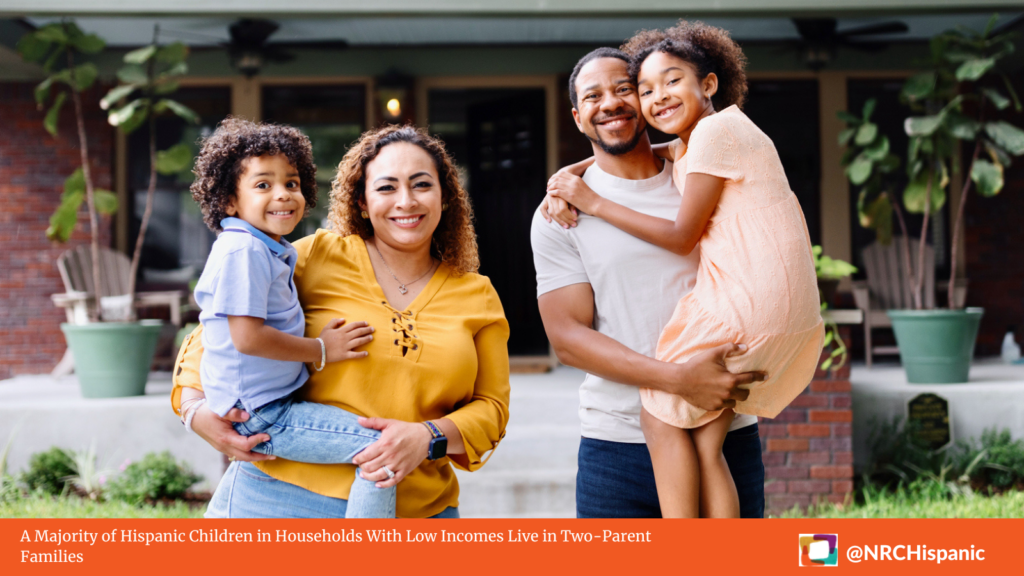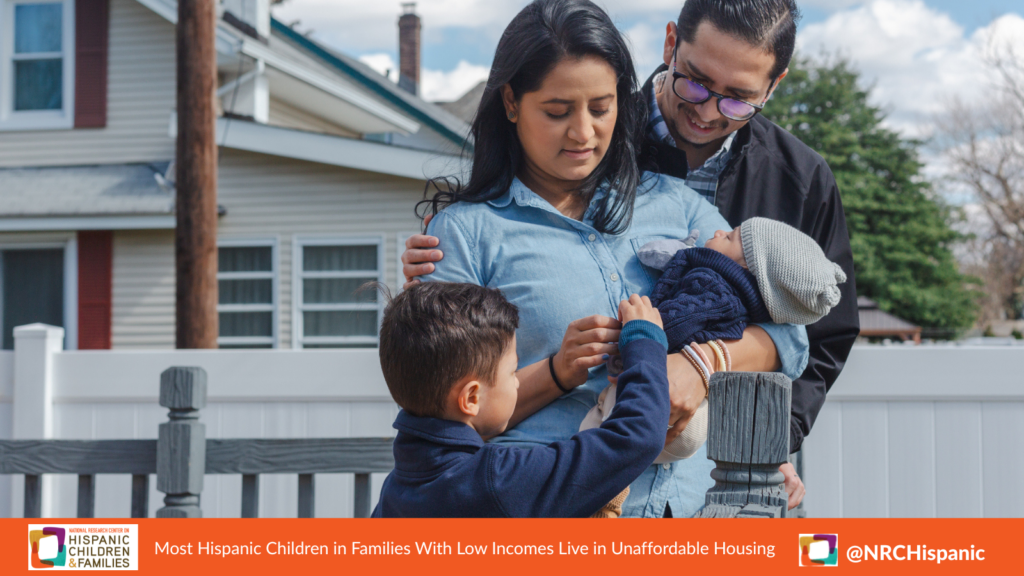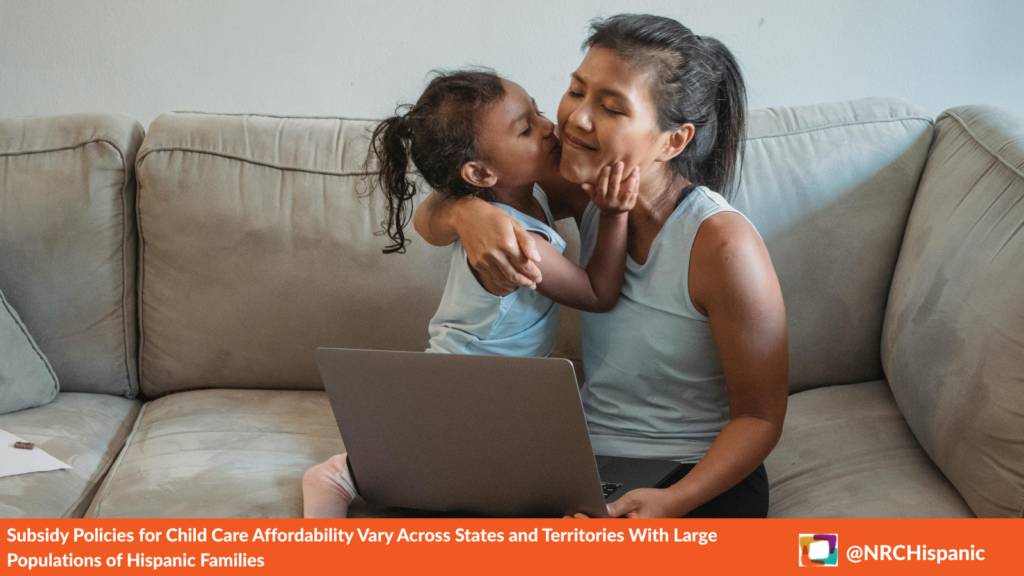Mar 6, 2023
Research Series
Latino Families’ Access to Early Care and Education Brief Series
High-quality early care and education (ECE) experiences are critical for children’s development, and evidence shows that Latino1 children—especially those from Spanish-speaking and immigrant households—often benefit more from these opportunities than their peers.i Child care also provides a critical support for families, allowing parents to pursue opportunities for employment and economic mobility
Access to ECE
Access to early care and education means that parents, with reasonable effort and affordability, can enroll their child in an arrangement that supports the child’s development and meets the parents’ needs.
This series draws on nationally representative data from the 2012 and 2019 National Survey of Early Care and Education (NSECE)—a set of four integrated, nationally representative surveys that describe the ECE landscape in the United States covering the period following the Great Recession and the period prior to the COVID-19 pandemic. Drawing from the NSECE, we describe multiple aspects of child care access and utilization for children in low-income Latino families, including the availability, flexibility, and affordability of care, as well as the characteristics of settings and providers who serve Hispanic children.
The publications in this series provide insights and recommendations for policymakers. And more recent publications compare 2019 and 2012 data to better understand changes in the early care and education experience for Latino families with young children.
- Nearly Half of Hispanic Children in Households With Low Incomes Used Early Care and Education in 2019 (March 2024): This brief provides a snapshot of ECE use among children in households with low incomes, with a focus on Hispanic children in immigrant and non-immigrant families.
- Many Hispanic Households With Low Income Access No-Cost or Low-Cost Care, Yet Nearly One in Four Face High Out-of-Pocket Costs (October 2023): This brief reports on the affordability of child care for a national sample of Latino households with low income who used nonparental care arrangements on a regular basis (at least 5 hours per week) for children up to age 13, and had at least one child younger than age 6 and not yet in kindergarten.
- Early Care and Education Providers Vary in Their Availability and Flexibility to Meet Hispanic Families’ Needs (October 2023): This brief describes, on a national level, several aspects of ECE provider availability and flexibility that may influence how accessible these providers are to Latino households, including those with low incomes.
- Disruptions to Child Care Arrangements and Work Schedules for Low-Income Hispanic Families are Common and Costly (January 2021): In this brief, we estimate the prevalence of care-work disruptions and their consequences for parents’ employment, examining how both the prevalence and consequences of disruptions may differ for low-income immigrant Hispanic, nonimmigrant Hispanic, Black, and White households.
- Work Hours, Family Composition, and Employment Predict Use of Child Care for Low-Income Latino Infants and Toddlers (July 2020): This brief examines how child, household, and community characteristics relate to low-income Hispanic families’ use of infant and toddler care. We explore a range of factors including the number and ages of children, whether there are children with special needs in a household, family structure, household composition, parents’ work status, income, nativity status of the household, English use in the home, and community urbanicity and poverty density.
- Multiple Factors Predict Higher Child Care Costs for Low-Income Hispanic Households (May 2020): This brief explores how various characteristics of child care arrangements, households, and communities, predict different levels of child care spending for a national sample of low-income Hispanic households with children who are birth to age 5.
- Webinar: Early Care and Education Access and Use Among Low Income Hispanic Families Webinar (November 2018): This webinar provides an overview of the Center’s work related to early care and education access and utilization among low-income Hispanic families.
- Who is Caring for Latino Children? The Characteristics of the Early Care and Education Teachers and Caregivers Serving a High Proportion of Hispanic Children (July 2018): This brief examines three aspects of the ECE workforce that are linked with how children learn, their socioemotional development, and classroom environment and quality of care. These include training, experience, and education; attitudes (including motivations for working with children); and linguistic and racial and ethnic diversity.
- Webinar: Looking at Latino Families’ Access to Early Care and Education Through Multiple Dimensions: (May 2018) This webinar describes policy-relevant findings from a series of studies that have examined important factors influencing Latino families’ access to ECE, such as search and decision-making processes, parental preferences, and flexibility of hours.
- Why and How Do Low-income Hispanic Families Search for Early Care and Education (ECE)? (May 2018) This brief describes low-income Hispanic parents’ reports of why and how they search for child care arrangements; comparison data for low-income non-Hispanic Black and White parents are also reported.
- How Common Are Nonstandard Work Schedules Among Low-Income Hispanic Parents of Young Children? (November 2017): This brief describes the work schedules of low-income Hispanic parents with young children from birth to age 5 (not yet in kindergarten) and provides comparison data for their non-Hispanic White and Black counterparts.
- How Well Are Early Care and Education Providers Who Serve Hispanic Children Doing on Access and Availability? (October 2017) : This brief provides a national portrait of providers serving a large proportion of Hispanic children, focusing on characteristics that shape access to and availability of ECE programs. Collectively, our findings suggest many ways in which providers—and home-based providers in particular—are likely responding to the needs of Hispanic families, as well as possible areas of unmet need.
- Centers Serving High Percentages of Young Hispanic Children Compare Favorably to Other Centers on Key Predictors of Quality (Jun 2017 ): This brief, seeks to better understand the predictors of quality of ECE centers that serve significant numbers of low-income Hispanic children from birth through age 5. The study compared ECE centers serving a high proportion of Hispanic children with ECE centers serving a low proportion of Hispanic children to see how they differed on various predictors of quality. The brief identifies key indicators of quality and shows that centers serving high proportions of Hispanic children perform as well–if not better–than their counterparts on these indicators.
- Hispanic Children’s Participation in Early Care and Education: Type of Care by Household Nativity Status, Race/Ethnicity, and Child Age (November 2016 ): In this brief, we provide a national snapshot of ECE participation among low-income Hispanic households. We use publicly available data to describe the percentage of young children in low-income Hispanic households who are in non-parental care on a regular basis and the different types of settings they experience.
- Hispanic Children’s Participation in Early Care and Education: Amount and Timing of Hours by Household Nativity Status, Race/Ethnicity, and Child Age (November 2016): This brief describes the amount and timing of hours that young Hispanic children from low-income households spend in ECE settings, distinguishing care that takes place during standard weekday hours from care that occurs during nonstandard times (i.e., evening, nighttime, and weekend hours).
- Hispanic Children’s Participation in Early Care and Education: Parents’ Perceptions of Care Arrangements, and Relatives’ Availability to Provide Care (November 2016): This brief examines how Hispanic parents’ (with children between birth and age 5) perceptions of various types of early care arrangements—center-based, home-based, non-relative, and relative care—differ from those of their white and black counterparts. It also reviews how the availability of relatives and other adults who might provide care differs across Hispanic, black, and white households and by household poverty level.
Footnotes
1 We use “Hispanic” and “Latino” interchangeably throughout this report. The terms are used to reflect the U.S. Census definition to include individuals having origins in Mexico, Puerto Rico, and Cuba, as well as other “Hispanic, Latino or Spanish” origins.
References
i Mendez Smith, J., Crosby, D., & Stephens, C. (2021). Equitable access to high-quality early care and education: opportunities to better serve young Hispanic children and their families. In L. Gennetian & M. Tienda (Eds.): Investing in Latino Youth. Annals of the American Academy of Political and Social Science (AAPSS), 696(1), 80–105. Sage. https://doi.org/10.1177/00027162211041942


